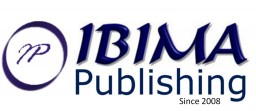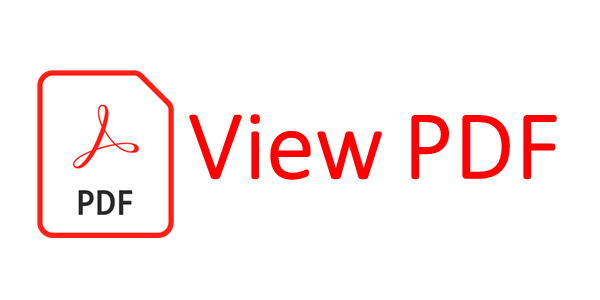Introduction
Organizations face increasing competitiveness, especially in tourism, which boosts economic growth in both developed and underdeveloped countries and aids in COVID-19 recovery, according to Rodríguez, Salcedo, and Castro-Ricalde (2023); Morelos, Cardona and Lora (2020); Campines (2024) and Crayne (2020). In a research study by OIT (2020), sustainable and formal businesses are needed to generate jobs and foster social and economic progress.
Marketing must adapt to digital environments due to technological advancements and changing consumer contexts and interests (Garcia and León, 2021). Digital marketing adds value and enhances tourism marketing to attract, retain, and increase customers, especially as consumer habits have changed post-COVID-19 (Maldonado, Perez, and Lalangui, 2019; Reyes and Meza, 2021).
Brazil and Argentina are advanced in these areas, while Peru saw a 50% increase in digital payments in 2020 due to e-commerce and digital banking (Organización Mundial de Comercio, 2021). Online purchases in Peru rose from 18.6% in 2019 to 41.8% in 2021, despite infrastructure challenges (Escuela deAdministración de Negocios para Graduados [Esan], 2022).
Consumer behavior, especially in tourism, involves new communication and promotion trends. Tools are needed to channel consumer needs and analyze market information, improving service, optimizing sales, attracting new business, and developing brand identity (Rendón & Sánchez, 2016; Toro, 2021 and Cudriz et al., 2020).
Influencer marketing, providing personalized and genuine experiences, is a tactical resource for organizations (Marreiro et al, 2014; De la Rosa, 2019). It establishes emotional connections, inspires trust, and provides real experience-based recommendations, essential for defining effective persuasion strategies (Barrera, et al., 2022). This article aims to identify Peruvian university students’ perceptions of social networks and influencers in travel decision-making.
Literature Review
Tourism Consumer Behavior
Consumer behavior focuses on the process of purchasing products and services, from the search for options to post-purchase (Alfinito and Federal, 2020). For many tourists, the travel experience and perceptions of the destination provided by others are the most reliable sources of information for decision-making, as recommendations indicate a willingness to revisit or support a destination. Various theories have been developed to explain consumer behavior (Perez et al, 2021). Consumer choices can be influenced by external factors such as economic, social, political, geographic, and demographic elements, while endogenous variables are controlled by economic agents, such as the tourist offer and the cultural development of consumers (De Oliveira, 2022).
The tourism consumer seeks valuable and rewarding experiences, highlighting the need to ensure a competitive advantage through innovative and differentiated services (Borges and De Sevilha, 2020; Perez et al., 2021), shows variations in the online consumer profile, such as the generational gap and differences in education and income levels. There are also differences between traditional and online consumers in booking accommodation and transportation through digital channels. Advances in big data analysis and research methodologies have evolved, emphasizing e-tourism.
Tourism Marketing
In a study developed by Maldonado, Perez and Lalangui (2019), Tourism marketing involves promoting various places along with all elements of the tourism sector, such as supply, demand, tourist facilities, infrastructure, and superstructure (Huertas, Pilco, and Rodríguez, n.d.). Companies in the tourism sector select their target audience and seek to identify and influence their needs, desires, and motivations, both locally and internationally, to propose and adapt their tourism products (Olguin et al, 2020). This process involves tourism institutions selecting the public they wish to target, analyzing needs, desires, and motivations at local, regional, national, and international levels to achieve tourist satisfaction and company objectives (Galloway et al, 2008).
There is often confusion between marketing and sales; they are not the same. Marketing encompasses sales and advertising within its functions, especially when considering the marketing mix of price, product, place, and promotion. Research, planning, and information systems are also integral parts of marketing (Kotler et al., 2013).
Due to increased competitiveness in the tourism sector, companies must adapt to identify customer needs and develop strategies to meet these objectives. This requires support from marketing specialists (Alcocer, 2013). The tourism product is crucial because it must be tailored to the client, not vice versa (Houston, 1986). The tourism product consists of integrated services with tourists as the main users (Siu-Lan and Alastair, 2004).
Tourism Marketing related to social networks
Due to new trends in online travel services and tourism offerings through social networks like Facebook, Instagram, and Twitter, businesses such as lodging and airlines can adapt to consumer changes by analyzing sociodemographic profiles (Rekom and Ve, 1999). Consumers can now purchase flights, book hotel stays, and conduct other transactions conveniently. Previously, travel information and purchases were limited to travel agency business hours. Facebook’s technology reduces these limitations, allowing for convenient travel planning (Chatzigeorgiou and Christou, 2020).
In today’s digital age, potential tourists obtain travel information through social networks and mainstream media advertising (Soto, 2016). Understanding tourists’ efforts to experience includes information about travel destinations, pre-purchase procedures, preparations, travel between countries, and experiences at the destination until returning home. For potential travelers, previous visitors’ experiences are valuable for business travel creators supporting the travel industry and stakeholders.
H1: The social network most used by Peruvian university students is TikTok due to its growing popularity, its focus on visual content and the ease of consumption of information in short video format.
H2: The social network that significantly impacts travel decision making among Peruvian university students is TikTok, due to the fact that it facilitates exposure to a wide range of destinations, which could influence travel decision making by providing them with a quick and visually stimulating overview of various options.
Influencer marketing
Influencer marketing involves compensating people who promote products or services on social networks (Bautista and Chávez, 2021). This practice is growing, and many marketing specialists are now working with influencers to increase their media presence (Campbell and Rapp, 2020).
According to Amics Digital (2024), 67% of marketing experts plan to increase investment in influencer marketing this year. Nanoinfluencers, with 1,000 to 10,000 followers, are expected to remain significant, while microinfluencers, with 10,000 to 100,000 followers, are ideal for specific campaigns due to their closeness and authority. Macroinfluencers, with over 100,000 followers, help brands achieve wider recognition.
Influencer marketing continues to grow, leveraging the success of word-of-mouth and relationship marketing (Brown and Hayes, 2008). Information and communication technologies (ICT) and broadband access have changed communication styles across various fields (Prado and Frogeri, 2017).
Choosing the right influencers is crucial for business strategy and success, ensuring alignment with the company’s message (Gómez, 2018). In our country, top influencers include Phillip Chu Joy (Pchujoy), Natalia Merino (Cynnamon Style), and Misias pero Viajeras (Fátima Sotomayor and Daniela Cabrera) (Vela, De la Cruz and Zegarra, 2023). These influencers stand out for their interaction, impact, and large follower base.
Digital Marketing
Digital marketing involves online strategies and tools (Arroyo and Docente, 2023) used to disseminate advertising information. It is defined as systematic procedures for advertising products or services on digital platforms (Cevallos, Guerrero and Ii, 2022). The importance of digital marketing has grown with ICTs in business management (Pedreschi and Nieto, 2023; Cueria et al, 2022), creating challenges like dynamic interactions between companies and customers, Web 2.0, and user-generated content on social networks, blogs, and online travel agencies.
Personalization and mass reach are key in digital marketing. Digital platforms create profiles with sociodemographic data, tastes, preferences, and interests, providing more information (Merino et al, 2023). This makes today’s buyer more demanding due to numerous communication tools (Mendieta and Garín, 2023). Tourism agendas using digital marketing strategies are more competitive (Llontop, 2021). In Latin America, digital marketing is used empirically and incipiently, with a lack of digital skills (Soledad et al., 2023; Levano et al., 2019).
Social Media Influencer
A social media influencer has a large followers’ network, allowing significant influence (Ki and Kim, 2019). New social media stars reach wider audiences and influence pop culture more than traditional celebrities (Nouri, 2018). Consumers use social networks to gather decision-making information. Many opinion leaders are influential in online communities, providing valuable advice (Casaló, Flavián and Ibáñez 2020).
The influencer phenomenon isn’t new. Traditional celebrities influenced consumer behavior before social networks (Erdogan, 1999). People imitate celebrities, who promote products and services through traditional media like TV and newspapers (Agrawal and Kamakura, 1995). Social networks are digital platforms that generate interaction between users and influencers, through which information is provided, allowing to give references about products or services used as well as the unlimited dissemination of information having a great potential to connect with the audience and originating the creation of the so-called influencers, which are people active in social networks that by their lifestyle have a profile on one or more platforms; they are public people who express their opinions, exercising an influencer marketing.
Methodology
The population is Peruvian university students, considering that in Peru there are 50 national universities and 92 private universities duly licensed by Superintencia Nacional de Educación Superior Universitaria (2024). According to the sampling theory by having a large and difficult to identify population, we proceed to apply simple random sampling (Otzen and Manterola, 2017), the infinite population formula, which is based on the standard normal distribution and is expressed as follows, from where:

Fig. 1 Formula for the simple random sample

Based on the calculation, a sample of 385 Peruvian university students was determined.
Instrument and data collection
A survey was structured in three parts: the first part consisted of five questions that allowed to profile the demographic data of the students; the second part consisted of eight questions with a 5-point Likert-type scale, from totally agree to totally disagree; and finally, the third part consisted of open questions in order to recognize the needs and expectations of the university students regarding the topic of the study.
Each of the participants indicated their consent based on a form prior to the completion of the virtual survey. Applied through a google forms, the form was available for 7 days to collect information from university students and was channeled with teachers from different universities nationwide.
Results
4.1 Profile of the respondents: From the analysis of the data, it was possible to identify that of the 385 Peruvian university students who participated in the study, 63.38% of the participants in terms of gender were female students, while 36.62% of the participants were male students (Figure 2). With regard to their ages, in Figure 3 we determined three marked ranges, from 18 to 21 years old (55.33%), from 22 to 26 years old (36.62%) and from 27 years old and older (8.05%). The average age of the participants was 22 years, all of whom are of legal age.
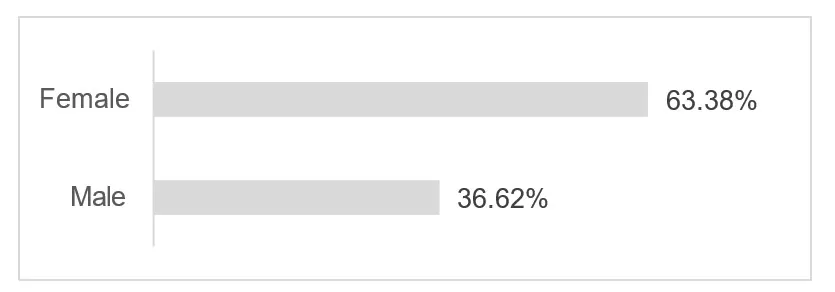
Fig. 2. Gender of the respondent

Fig. 3. Age range of the surveyed students
Use of social networks
About the analysis of the use of social networks, Figure 4 indicates that participants use the social networks: Instagram (40.52%), TikTok (40.52%),
Facebook (10.65%) and YouTube (6.75%). This shows that the social network Instagram is one of the most used by university students.

Fig. 4. Use of social network
Influence of social networks on tourism travel decision.
The participants specify that they agree (49.09%) and totally agree (39.74%) that social networks influence their tourism travel decision, obtaining 88.83% of Peruvian university students who agree with the impact of social networks (Figure 5).
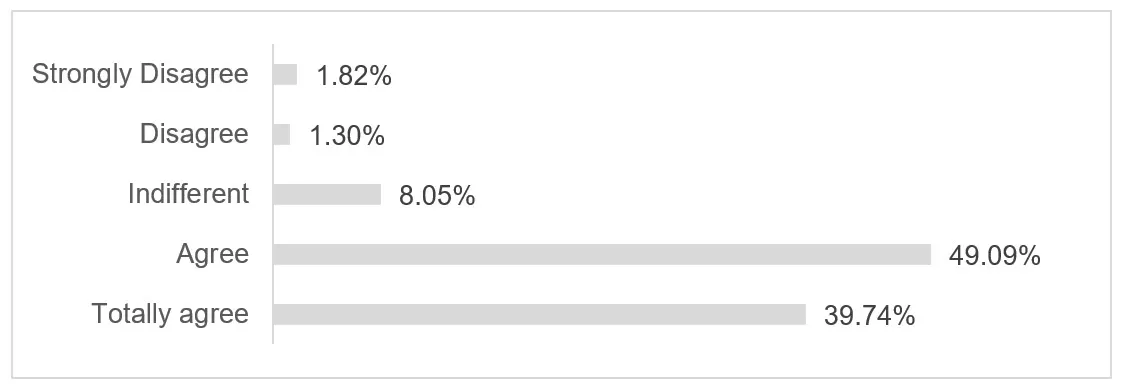
Fig. 5. Use of social networks to make travel (tourism) decisions
About determining which of the existing social networks is the one that influences to a greater extent their tourism travel decisions, Figure 6 shows that women consider that the social network that has impacted to a greater extent is TikTok (63.52%), similarly in relation to males, the social network TikTok (47.52%) is the one that has impacted their travel decisions and in second place in both cases is Instagram (Figure 7).
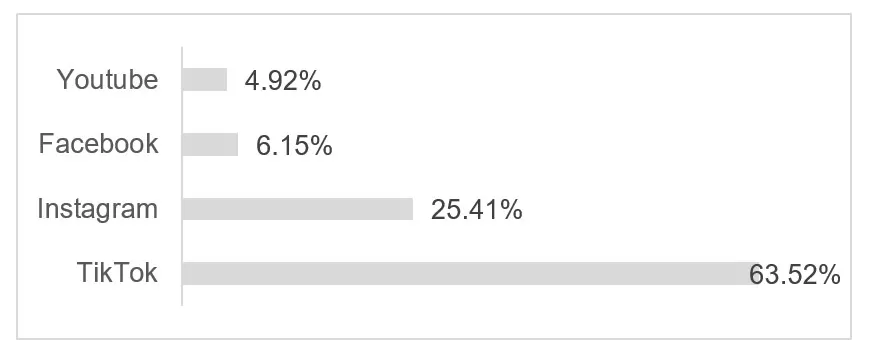
Fig. 6. Social networks that have influenced travel decision making-Female

Fig. 7. Social networks that have influenced travel decision making –Male
Influencers considered to have the greatest impact on tourism travel decisions.
The research identifies which influencers are considered to have the greatest influence on their tourism travel decisions. Figure 8 shows that the influencers considered Misias pero Viajeras (50.38%), Viaja y Prueba (21.30%), Traveleras (13%) and others (15.32%), where the first 3 are local influencers focused on providing content about tourism experiences.
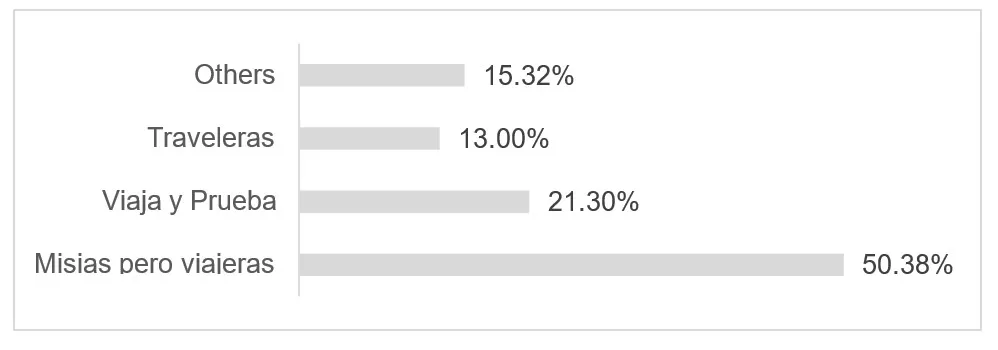
Fig. 8. Influencers that have influenced their travel (tourism) decision making
Characteristics of the content of the influencers analyzed.
According to the influencers mentioned by the participants, in table 1, the consolidated information that allows observing the number of followers and subscribers is shown, in which it is ratified that the influencers Misias pero Viajeras lead in number of followers, in each of the social networks analyzed, followed by Viaja y Prueba and finally Traveleras.
Table 1. Followers per influencers

The participants considered that the influencers have credibility in tourism-related topics, of which the participants indicated to agree (48.05%) and totally agree (34.03%), while others indicated that they could not agree or disagree with the statement (15.85%), as shown in Figure 9.
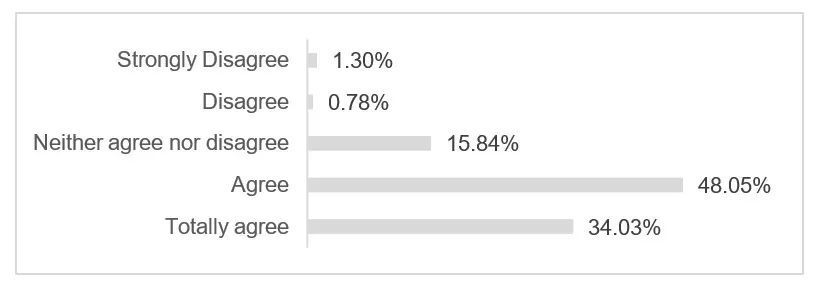
Fig. 9. Credibility of influencers’ content on tourism issues
When asked if they consider that the content developed by the influencer is useful, the participants indicated that they agree (52.21%) and totally agree (35.84%) while others indicated that they could not agree or disagree with the statement (10.12%), as shown in Figure 10.
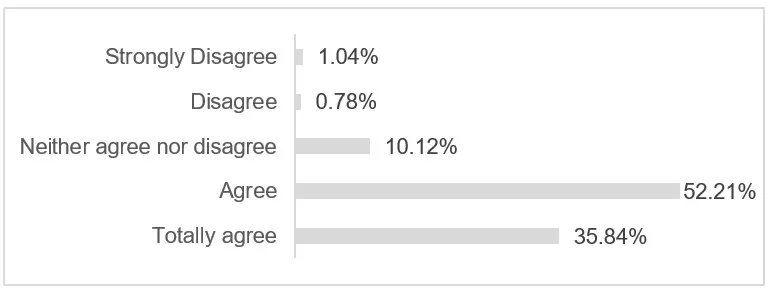
Fig. 10. Opinion on useful content from influencers
At the same time, the participants were asked, if they had to mention certain characteristics that defined the influencer mentioned, what they would be, in that sense the following have been specified in order of frequency: savings (35.84%), travel (34.29%), influence (7%), information (5.19%), fun (3.64%), reliability (2.60%), curiosity (2.60%), creativity (2.34%), among others according to figure 11.
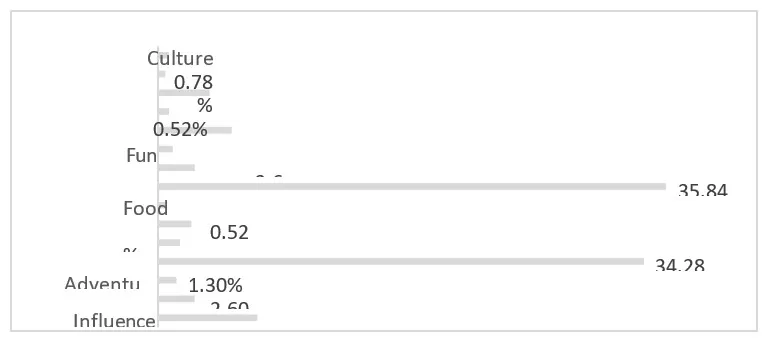
Fig. 11. Characteristics that define the mentioned influencers
Figure 12 shows that when the participants were asked if they consider that the content of the influencers has increased their willingness to know more places in Peru and internationally, they stated that they totally agree (46.23%) and agree (43.38%) and some stated that they could neither agree nor disagree (8.57%).
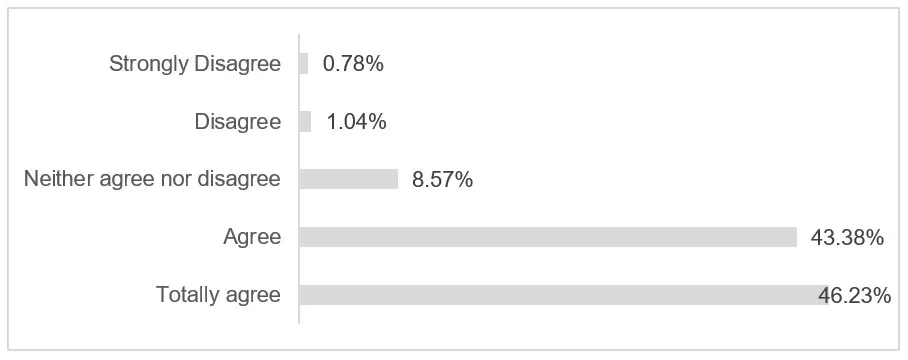
Fig. 12. Opinion about the content of the influencers to increase willingness to know more places in Peru or internationally
In relation to the appreciation of the participants regarding the content shown by the influencers, they indicate according to Figure 13 that they can highlight that they have good content (20%), useful (18.70%), interesting (17.40%), entertaining (9.35%), authentic (9.35%), understandable (6.49%), inspiring (5. 19%), creative (4.68%) and safe (2.60%), from which the usefulness of the content to generate savings, providing real information, showing situations in an authentic way, variety in the tourist places visited and the creativity with which the information is shown stand out.

Fig. 13. Appreciation of content shown by influencers
Topics to be promoted in influencers’ content
The participants consider that influencers should promote the development of: Information about local culture and customs (17%), information about gastronomic routes (16%), economic tourism (11%), information about full day destinations (6%), travel tips in general (6%), visibility of sustainable tourism sites (5%) and safety and access recommendations (5%), Figure 14.
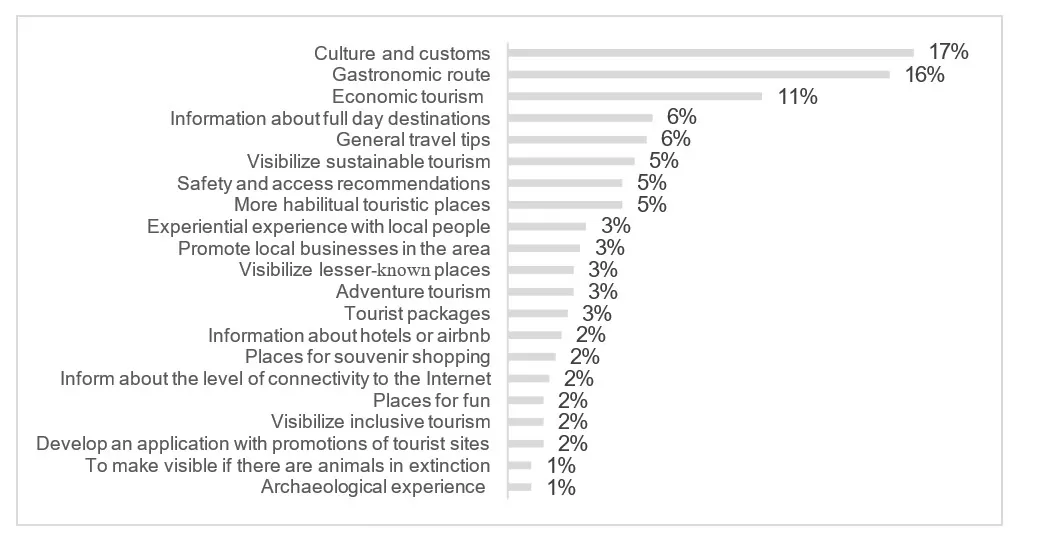
Fig. 14. Topics that infuencers should talk about
Discussion
The study’s main hypothesis was that TikTok is the most used social network by Peruvian university students due to its popularity, visual content, and ease of consumption in short videos. The hypothesis was confirmed, with 40.52% using TikTok and 40.52% using Instagram, similar to Ana and Istudor (2019) on Instagram usage (85.7%) and platform use from 1-3 hours (56.4%) and 3-5 hours (28.2%).
TikTok impacts travel decision-making by offering quick exposure to travel experiences. Participants confirmed this indicating that this information is decisive for their decision making, which is in line with what is mentioned by, Maguirre, Ruelas and De la Torre (2016) who found User-Generated Content (UGC) crucial for sharing travel experiences, especially on TikTok. This platform is significant for Gen Z and millennials, transferring experiences in natural spaces and promoting sustainable tourism (Promperú, 2022).
In relation to the results obtained on the influence exerted by influencers and how they impact university students’ travel decision-making, participants indicated that Misias Pero Viajeras have a strong influence with 50.38%, Viaja y Prueba with 21.30%, and Traveleras with 13%, being considered as influential, which is related to the results obtained by Gómez (2018), where influencers’ online reputation, credibility, and ability to persuade through personal experiences have a considerable impact on decision-making process.
In mid-2021, Peruvian influencers found growth opportunities due to a large user base, with companies increasing digital advertising. Mateus, León and Alberca (2022) and Kitsios et al. (2022) noted that consumers face significant cognitive load from extensive social network use, where fast, practical, and creative communication by influencers creates greater acceptance.
It is confirmed that students highly value the usefulness of influencer content, planning activities and promoting economic tourism. Authenticity and attractive content are also valued, in line with Rodríguez and García (2022), who found that travel users share experiences in a natural way, increasing engagement. In relation to the participants’ assessment of the content shown by the influencers, they indicated that they value good content (20%), in addition to its being useful (18.70%), interesting (17.40%), entertaining (9.35%) and authentic (9.35%), mainly highlighting the usefulness of the content to generate savings, providing authentic information and the creativity with which the information is shown.
It is confirmed that Peruvian students trust local influencers due to cultural familiarity. Participants identified the top influencers as Peruvian, similar to Aparecida (2023), noting a preference for local influencers for credibility and inspiration. In a research study conducted by Rhor, Carvajal and Álvarez (2022), they emphasized that influencers need communication skills, charisma, and the ability to inspire, with 89.71% of participants saying influencer content increased their willingness to explore Peru and beyond.
According to the results, those partially confirmed that students want influencers to highlight lesser-known destinations, offer economic travel tips, and cover culture, gastronomy, sustainable tourism, safety, and access.
Conclusions
The research shows that social media trends have changed, with TikTok now the most influential platform in travel decision-making for university students. This platform, popular since 2020-2021, effectively transmits emotions and experiences through short videos, catering to students’ need for quick and practical information.
Students value influencers’ authenticity and useful data, especially for budget management. Peruvian influencers like Misias pero Viajeras, Viaja y Prueba, and Traveleras are noted for their influence and creative, inspiring content that aids in planning affordable trips.
Students suggested that influencers should highlight cultural and traditional aspects, gastronomic routes, economic tourism, safety, and accessibility. They also proposed ideas such as archaeological experiences, endangered animal awareness, developing an app for tourist promotions, inclusive tourism, fun places, internet connectivity, souvenir shops, hotel or Airbnb information, adventure tourism, lesser-known places, local businesses, and experiential interactions with locals.
The Peruvian government must address technological infrastructure issues, as many areas lack internet access. Additionally, most entrepreneurs need better digital and technological skills to sustain their market presence.
In the specific context of how TikTok impacts the travel decision making of Peruvian university students, practical implications could include:
- Development of Targeted Digital Marketing Strategies: Companies in the tourism sector can design advertising campaigns and digital marketing strategies specifically targeting Peruvian university students on TikTok and other relevant social This could include creating engaging and relevant content that highlights popular tourism destinations among this demographic.
- Collaborations with Influencers: Travel agencies and tourist destinations can collaborate with local influencers or influential university students on TikTok to promote their services and destinations. These collaborations can help increase the visibility and credibility of tourism offerings among the target audience.
- Personalization of Offers and Experiences: Based on insights gained about the travel preferences and behaviors of Peruvian university students in TikTok, companies can customize their tourism offers and experiences to better meet the needs of this market segment. This could include tour packages tailored to their specific interests and unique travel
- Continuous Monitoring and Analysis: It is important for companies in the tourism sector to continue to monitor and analyze trends and conversations on TikTok and other relevant social platforms. This will allow them to adjust their strategies and campaigns as needed to stay aligned with the changing preferences and behaviors of Peruvian college students.
In summary, the practical implications of this study can help tourism companies develop more effective strategies, improve the relevance of their offerings, and maximize their impact on the target market.
References
- Amics Digital. (2024). El marketing de influencers en 2024. https://amicsdigitals.com/marketing-influencers-2024/
- Barrera Noboa, E., Manuel Cueva Estrada, J., Armando Sumba Nacipucha, N., & Isaac Villacrés Beltrán, F. (2022). Análisis de la influencia del marketing de contenidos en el turismo interno de Ecuador. https://doi.org/10.14349/sumneg/2022.V13.N28.A7
- Brown, D., & Hayes, N. (2008). Marketing de influencers. https://doi.org/https://doi.org/10.4324/9780080557700
- Escuela de Administración de Negocios para Graduados [Esan]. (2022). E COMMERCE:¿Cuánto ha crecido en Perú y qué tendencias impulsan el mercado? In Gestión. https://especial.gestion.pe/esanbusiness/wp-content/uploads/sites/11/2022/09/E- COMMERCE_-Crecimiento-en-el-Perú-y-las-tendencias-que-impulsan-el-mercado.pdf
- (2020). El impacto de la COVID-19 en el sector del turismo. Oit, 1–10. https://www.ilo.org/wcmsp5/groups/public/—ed_dialogue/— sector/documents/briefingnote/wcms_748876.pdf
- Organizacion Mundial de Comercio. (2021). Reporte Oficial de la Industria Ecommerce en Perú. Capece, 100. https://www.capece.org.pe/wp-content/uploads/2021/03/Observatorio- Ecommerce-Peru-2020-2021.pdf
- (2022). Cómo hacer de TikTok un motor de oportunidades.
- Superintencia Nacional de Educación Superior (2024). Lista de Universidades. https://www.sunedu.gob.pe/lista-universidades/
- Agrawal, J., & Kamakura, W. A. (1995). The Economic Worth of Celebrity Endorsers: An Event Study Analysis. Journal of Marketing, 59(3), 56. https://doi.org/10.2307/1252119
- Alcocer, (2013). Competitividad en el sector turístico : una revisión de la literatura. Revista Lebret, 271–291
- Alfinito, , & Federal, D. (2020). Comportamento do consumidor de turismo : Uma revisão sistemática da produção científica brasileira Tourism consumer behavior : A systematic review of the Brazilian scientific production . 14(3), 109–133.
- Ana, -I., & Istudor, L.-G. (2019). The Role of Social Media and User-Generated-Content in Millennials’ Travel Behavior. Management Dynamics in the Knowledge Economy, 7(1), 87–104. https://doi.org/10.25019/mdke/7.1.05
- Aparecida, (2023). Relaciones con los públicos en las redes sociales: Un análisis de las razones para seguir a influencers de viaje en Instagram. 25(13), 161–176.
- Arroyo, E., & Docente, L. Q. (2023). Estrategias de marketing digital para posicionar la marca ciudad Bahía de Caráquez, Cantón Sucre. 1495–1509. https://doi.org/10.34140/bjbv5n3-005
- Bautista, Á., & Chávez, H. (2021). Marketing de influenciadores como estrategia de las campañas publicitarias. Uniandes Episteme, 8, 33–47.
- Borges, S., & De Sevilha, M. (2020). Interlocuçoes entre turismo, comportamento do consumidor e a Sociedade dos Sonhos. Revista de Turismo y Patrimonio Cultural, 18(3), 503–512. https://doi.org/10.25145/j.pasos.2020.18.035
- Campbell, C., & Rapp, J. (2020). More than meets the eye : The functional components underlying influencer marketing. Business Horizons, 63(4), 469–479. https://doi.org/10.1016/j.bushor.2020.03.003
- Campines, (2024). Marketing Influencer y su Impacto en las Decisiones de Compra. Ciencia Latina Revista Cientìfica Multidisciplinar, 8. https://doi.org/https://doi.org/10.37811/cl_rcm.v8i1.9514
- Casaló, L. V., Flavián, C., & Ibáñez-Sánchez, S. (2020). Influencers on Instagram: Antecedents and consequences of opinion leadership. Journal of Business Research, 117(October 2017), 510–519. https://doi.org/10.1016/j.jbusres.2018.07.005
- Cevallos, C., I, E. F., Guerrero, A., & Ii, C. E. (2022). Marketing digital para la nueva realidad del sector turístico de la provincia de Tungurahua Digital marketing for the new reality of the tourist sector of the province of Tungurahua. 9, 148–161.
- Cudriz, , Carlos, E., Corrales, M., David, J., Carlos, E., Cudriz, N., David, J., & Corrales, M. (2020). El marketing digital como un elemento de apoyo estratégico a las organizaciones. 16, 0–13.
- Cueria, F., Ricardo, P., Carmen, E., Labrada, M., Ramona, J., Cueria, N. F., Pérez, C., Ramona, , Labrada, M., Fidel, F., & Velázquez, F. (2022). Gestión del marketing digital en organizaciones turísticas. 26.
- Chatzigeorgiou, , & Christou, E. (2020). Adoption of social media as distribution channels in tourism marketing: A qualitative analysis of consumers’ experiences. Journal of Tourism, Heritage and Services Marketing, 6(1), 25–32. https://doi.org/10.5281/zenodo.3603355
- Crayne, M. P. (2020). The traumatic impact of job loss and job search in the aftermath of COVID-19. Psychological Trauma: Theory, Research, Practice, and Policy, 12, S180–S182. https://doi.org/10.1037/TRA0000852
- De la Rosa, (2019). Marketing digital como recurso táctico para las microempresas. 8(8), 156–169. https://doi.org/10.21803/adgnosis.v8i8.368
- De Oliveira, (2022). Theoretical microeconomic model of tourism consumption. 211–234.
- EvGarcia-Machado, E., & León- Santos, M. (2021). ¿Evolución o expansión? Del Marketing tradicional al Marketing Digital. Revista Cubana de Información y Comunicación, 10, 37–52.
- Erdogan, B. Z. (1999). Celebrity Endorsement: A Literature Review. Journal of Marketing Management, 15(4), 291–314. https://doi.org/10.1362/026725799784870379
- Galloway, G., Mitchell, R., Getz, D., Crouch, G., & Ong, B. (2008). Sensation seeking and the prediction of attitudes and behaviours of wine tourists. 29, 950–966. https://doi.org/10.1016/j.tourman.2007.11.006
- Gómez Nieto, B. (2018). El influencer: herramienta clave en el contexto digital de la publicidad engañosa. Methaodos Revista De Ciencias Sociales, 6(1), 149–156. https://doi.org/10.17502/m.rcs.v6i1.212
- Huertas, , Pilco, M., & Rodríguez, J. C. (n.d.). El marketing turístico en el posicionamiento de mercado. Ciencia Latina Revista Cientìfica Multidisciplinar, 6(2022), 5339–5349.
- Houston, S. (1986). The Marketing Concept: What it is and What it is Not. Https://Doi.Org/10.1177/002224298605000207, 50(2), 81–87. https://doi.org/10.1177/002224298605000207
- Ki, -W., & Kim, Y. K. (2019). El mecanismo por el cual los influencers de las redes sociales persuaden a los consumidores: el papel del deseo de los consumidores de imitar. Psychology and Marketing. https://doi.org/https://doi.org/10.1002/mar.21244
- Kitsios, F., Mitsopoulou, E., Moustaka, E., & Kamariotou, M. (2022). User-Generated Content behavior and digital tourism services: A SEM-neural network model for information trust in social networking sites. International Journal of Information Management Data Insights, 2(1), 100056. https://doi.org/10.1016/j.jjimei.2021.100056
- Levano-Francia, , Sanchez Diaz, S., Guillén-Aparicio, P., Tello-Cabello, S., Herrera-Paico, N., & Collantes-Inga, Z. (2019). Competencias digitales y educación. Propósitos y Representaciones, 7(2). https://doi.org/10.20511/pyr2019.v7n2.329
- Llontop, (2021). Digital marketing and the promotion of local tourism. Revista de Ciencias Empresariales – BIS, 52–64.
- Maguirre, V., Ruelas, G. C., & De La Torre, C. G. (2016). Women empoWerment through social innovation in indigenous social enterprises. Revista de Administracao Mackenzie, 17(6), 164–190. https://doi.org/10.1590/1678-69712016/administracao.v17n6p164-190
- Maldonado, V., Perez, M. J., & Lalangui, J. (2019). TOURISM MARKETING: AN OPPORTUNITY FOR SMALL AND MEDIUM-SIZED ECUADORIAN COMPANIES FOR THEIR SUSTAINABLE GROWTH. 118–124.
- Marreiro, , Medeiros de Araujo, M., De Melo, F., & De Sousa, M. (2014). REVISIÓN DE LA BIBLIOGRAFÍA SOBRE LOS ESTUDIOS DEL COMPORTAMIENTO DEL CONSUMIDOR ONLINE EN EL ÁREA DE TURISMO. Estudios y Perspectivas En Turismo, 526–546
- Mateus, , León, L., Núñez-Alberca, A. (2022). Influencers peruanos, ciudadanía mediática y su rol social en el contexto del Covid-19. Comunicación y Sociedad, 1–25. https://comunicacionysociedad.cucsh.udg.mx/index.php/comsoc/article/view/e8218
- Mendieta-Aragón, A., & Garín-Muñoz, T. (2023). Consumer behaviour in e-Tourism: Exploring new applications of machine learning in tourism studies. Investigaciones Turisticas, 26(26), 350–374. https://doi.org/10.14198/INTURI.24629
- Merino – Sanchez, L., Alvarado, J., Vega – Bonilla, R., Uquillas – Granizo, B., & Merino – Sanchez, C. (2023). Impact on the tourism sector by applying digital marketing strategies – real case (Vol. 8, Issue 3). https://doi.org/10.23857/pc.v8i3
- Morelos-Gómez, J., Cardona-Arbeláez, D., & Lora-Guzmán, H. (2020). Análisis del comportamiento del turismo informal en la ciudad de Cartagena de Indias, Colombia Analysis of the behavior of informal tourism in the city of Cartagena de Indias, Colombia. Investig.Desarro.Innov, 11(1), 63–71. https://doi.org/10.19053/20278306.v11.n1.2020.11683
- Nouri, (2018). The Power of Influence: Traditional Celebrity vs Social Media Influencer. Advanced Writing: Pop Culture Intersections, 176(32), 4983–5002. https://scholarcommons.scu.edu/engl_176/32
- Olguin, , Mero, G., Celestino, J., & Iriarte, E. (2020). MARKETING TURÍSTICO COMO ESTRATEGIAS PARA PROMOVER EL TURISMO EN LA CIUDAD DE BAHÍA DE CARÁQUEZ. ULEAM Bahía Magazine (UBM), 1(1), 24–30.
- Pedreschi, R., & Nieto, O. (2023). MARKETING TURÍSTICO, VÍA PARA PROMOCIONAR EL TURISMO EN EL ÁREA DE Revista Científica Universitaria, 243–265Otzen, T., & Manterola, C. (2017). Técnicas de Muestreo sobre una Población a Estudio. International Journal of Morphology, 35(1), 227–232. https://doi.org/10.4067/S0717- 95022017000100037
- Perez, E. del C., Batista, E., Medina, J., & Cueria, N. (2021). Vista de Comportamiento del consumidor turístico. Análisis bibliométrico em Scopus. https://doi.org/https://dx.doi.org/10.5209/pepu.77526
- Prado, Á., & Frogeri, R. F. (2017). MARKETING DE INFLUÊNCIA: um novo caminho para o Marketing por meio dos Digital Influencers. INTERAÇÃO (Varginha), 19(2), 43–58. http://interacao.unis.edu.br/wp-content/uploads/sites/80/2017/12/v19-n2-art03.pdf
- Rekom, Johan Van Teunissen, , & Ve, F. (1999). Improving the position of business travel agencies: coping with the information challenge. Information Technology & Tourism, 2, 32.41.
- Reyes Ramos, , & Meza Jiménez, M. de L. (2021). Cambios en los estilos de vida durante el confinamiento por COVID-19. CIENCIA Ergo-Sum, 28(4). https://doi.org/10.30878/CES.V28N4A4
- Rhor, M. D. B., Carvajal, G. P. C., & Álvarez, M. G. M. (2022). Influencer Marketing: An Analysis of Credibility and Purchasing Intention Created by an Opinion Leader. Signo y Pensamiento, 40(78). https://doi.org/10.11144/Javeriana.syp40-78.miac
- Rodríguez-Hidalgo, A. B., Salcedo, A., & Castro-Ricalde, D. (2023). MARKETING DE INFLUENCERS EN EL TURISMO: UNA REVISIÓN SISTEMÁTICA DE LITERATURA INFLUENCER. Revista de Comunicación de La SEECI, 99–125. https://doi.org/http://doi.org/10.15198/seeci.2023.56.e809
- Rodríguez, P., & García, J. S. (2022). Use of influencers in the Spanish tourism companies’ digital marketing. Info, 51, 200–222. https://doi.org/10.7764/cdi.51.27743
- Siu-Lan, , & Alastair, M. (2004). ). Internet Marketing in Tourism in Asia: An Evaluation of the Performance of East Asian National Tourism Organization Websites. Journal of Hospitality & Leisure Marketing. https://doi.org/https://doi.org/10.1300/J150v11n04_07
- Soledad, A., Ponciano, O., Antonio, M., Paredes Perez, J., Eleodoro, A., Crispin, P., Raúl, O., Guere, R., Citar, C., Pérez, P., & Rojas, A. Y. (2023). Marketing Digital (MD) en Empresas Turísticas de la Región Centro del Perú (RCP). RSocialium, 7(1), 102–116. https://doi.org/10.26490/UNCP.SL.2023.7.1.1713
- Soto Velez, I. (2016). Puerto Rico 2.0: La comunicación turística en la era digital. SOCIAL REVIEW. International Social Sciences Review / Revista Internacional de Ciencias Sociales, 5(1), 247–256. https://doi.org/10.37467/gka-revsocial.v5.388
- Toro-Espinoza, F. (2021). Digital marketing : current tools and trends. 7, 907–921.
- Vela, M., De la Cruz, S., & Zegarra, H. (2023). Estudio | Este es el Top 10 de influencers peruanos 2023. https://forbes.pe/lista-forbes/2023-10-26/estudio-este-es-el-top-10-de- influencers-peruanos-2023
- Kotler, , Schmitt, B., Ferrera, J. R., Lorite, N., Ramos, N. L., Tobergte, D. R., & Curtis, S. (2013). Fundamentos de. In Entelequia: revista interdisciplinar (Vol. 4, Issue 3).
- Rendón Ortiz, A. P., & Sánchez Torres, W. C. (2016). Factores de decisión de compra de productos turísticos: una exploración desde la netnografía. XV Asamblea General Asociación Latinoamericana de Facultades y Escuales de Contaduría y Administración.
